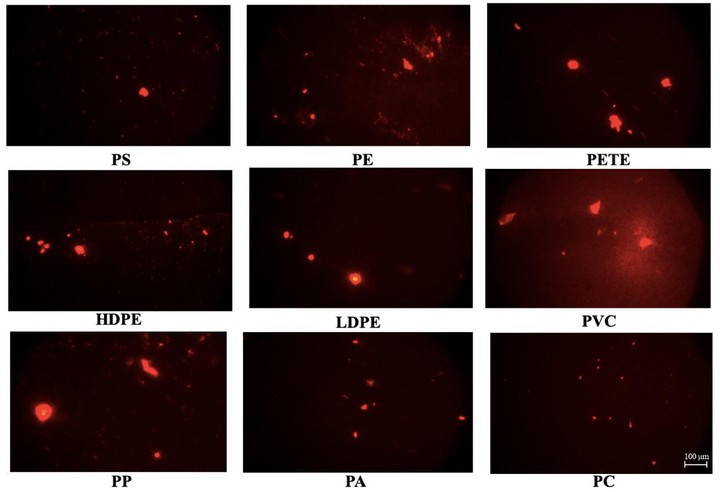
Abstract
Microplastics are globally recognized as contaminants in freshwater and marine aquatic systems. To date there is no universally accepted protocol for isolation and quantification of microplastics from aqueous media. Various methodologies exist, many of which are time consuming and have the potential to introduce contaminants into samples, thereby obscuring characterization of the environmental microplastic load. Here, we present first steps in the detection of microplastics in liquid samples, based on their fluorescent staining followed by high throughput analysis and quantification using Flow Cytometry. Using controlled laboratory settings nine polymer types [polystyrene (PS); polyethylene (PE); polyethylene terephthalate (PET/PETE); high density polyethylene (HDPE); low density polyethylene (LDPE); polyvinyl chloride (PVC); polypropylene (PP); nylon (PA); polycarbonate (PC)] were tested for identification and quantification in freshwater. All nine plastic types were stained with 10 μg/mL Nile Red in 10% dimethyl sulfoxide with a 10 min incubation time. The lowest spatial detectable limit for plastic particles was 200 nm. Out of the nine polymer types chosen for the study PS, PE, PET, and PC were well-identified; however, results for other plastic types (PVC, PP, PA, LDPE, and HDPE) were masked to certain extent by Nile Red aggregation and precipitation. The methodology presented here permits identification of a range of particle sizes and types. It represents a significant step in the quantification of microplastics by replacing visual data interpretation with a sensitive and automated method.